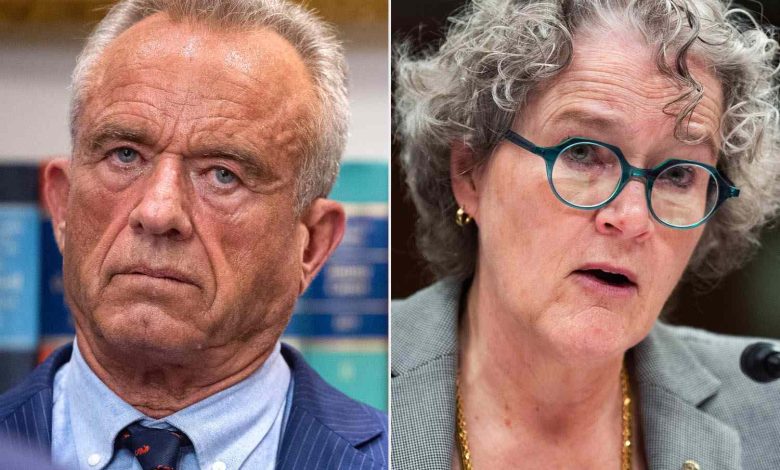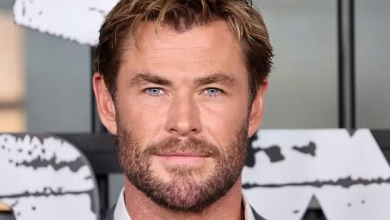Dr. Jeanne Marrazzo Fired by RFK Jr.: What This Means for the Future of U.S. Vaccine Policy

Introduction
On September 26, 2025, Dr. Jeanne Marrazzo — a leading infectious-disease researcher who had been serving as director of the National Institute of Allergy and Infectious Diseases (NIAID) — was formally terminated by Health and Human Services Secretary Robert F. Kennedy Jr. The firing followed months of internal controversy, an earlier administrative leave, and a whistleblower complaint filed by Marrazzo alleging politicization of research, cancelled grants, and actions that jeopardized clinical trials. That sequence of events has sent a ripple through the public-health and scientific communities — raising urgent questions about the direction of U.S. vaccine policy, the independence of health agencies, and the future of evidence-based decision-making in a politically charged environment.
The broader context of Marrazzo’s dismissal, analyzes reactions from scientists and policymakers, and considers likely short- and medium-term impacts on vaccine development, public trust, and health security.
Who is Dr. Jeanne Marrazzo — and why her firing matters
Dr. Jeanne Marrazzo is a respected infectious-disease specialist with years of clinical and research leadership. She rose to national prominence after being appointed director of NIAID in August 2023, succeeding interim leadership. NIAID is a central U.S. institute for infectious-disease research and played a major role during the COVID-19 vaccine and therapeutic development. Removing the head of NIAID is consequential because the institute funds and coordinates much foundational research that feeds clinical trials, regulatory decisions, and public-health guidance.
Marrazzo’s supporters say her firing is especially alarming because it appears tied directly to her whistleblower complaint. In September she filed allegations with the U.S. Office of Special Counsel, asserting that decisions by the current administration and parts of HHS were disrupting grant-funded research, cancelling trials, and undermining safeguards for research participants. Within weeks of lodging those complaints — and after a period on administrative leave — she was dismissed. Her attorney and colleagues characterize the move as retaliatory; HHS leadership has cited broad executive authority for personnel decisions without detailing a specific cause.
The immediate political and scientific context
Marrazzo’s dismissal is not an isolated personnel shuffle. It comes in the wake of a series of high-profile changes at federal public-health agencies under Secretary Kennedy’s leadership. Earlier in 2025, Kennedy childhood report, citing conflicts of interest among members — a move that experts said was based on a contested reading of older reports and that disrupted long-standing advisory pathways for vaccine recommendations. The current administration’s rhetoric has emphasized distrust of pharmaceutical industry influence and a desire to “reform” vaccine policy; critics argue that this rhetoric has morphed into administrative moves that sideline career scientists and restructure decision-making in ways that prioritize ideology over established scientific procedures.
The timing also matters: the nation remains in a sensitive post-pandemic era where vaccine research pipelines (for influenza, RSV, novel coronaviruses, and other threats) require sustained funding, transparent trial oversight, and clear channels for translating evidence into policy. Disruptions at agencies like NIAID can slow trials, chill collaboration between federal institutes and academic partners, and complicate international partnerships. That’s a direct risk to the speed and safety of future vaccine development.
Reactions from scientists and public-health leaders
The scientific community’s response has been loud and swift. Multiple media outlets, leading researchers, and former public-health officials have criticized Marrazzo’s termination as damaging to the independence of science within government. A particularly notable reaction was a public statement — and an op-ed presence — by several former U.S. Surgeons General and other senior officials warning that recent HHS actions represent an “unprecedented threat” to public health institutions and morale. Those voices framed Marrazzo’s firing as part of a broader pattern: sidelining career experts, removing advisory committees, and making policy decisions that appear to bypass established scientific review.
Democratic lawmakers and some public-health organizations have called for congressional oversight hearings and for protections to shield whistleblowers and scientists from retaliation. Meanwhile, some constituencies that back Secretary Kennedy’s approach welcomed the change, arguing that it’s necessary to root out industry influence and restore public trust in federal health agencies. The divide is stark: to some, the move is a purge of expertise; to others, it’s reform.
What Marrazzo’s whistleblower complaint alleges — and why it’s consequential
Public reporting about Marrazzo’s whistleblower filing indicates several specific allegations: cancellation of research grants, suppression or redirection of clinical trials, and policy decisions that, in her view, put study participants at risk and undermined scientific integrity. While details of whistleblower filings can be confidential and some claims require investigation, the broad allegation is one of systemic interference: administrative or political priorities overtaking standard scientific review and oversight processes.
If investigations substantiate patterns of grant cancellations or manipulations of trial oversight, the consequences could be wide-ranging: legal liabilities for the government, loss of future grant applicants wary of political interference, and a chilling effect where academic investigators hesitate to partner with federal agencies. Even if formal findings are mixed, the perception of politicization can itself erode collaborations and slow translational research.
Immediate policy and operational consequences
- Disruption to active trials and grant programs. When a major institute experiences leadership upheaval, program managers and principal investigators often face delays in administrative approvals, contract renewals, and data-monitoring communications. Even a temporary freeze in approvals can delay enrollment, extend timelines, and increase costs for multi-center vaccine trials. Those delays make it harder to respond quickly to emergent pathogens.
- Talent flight and morale loss. Career scientists within federal agencies and partner academic centers may feel vulnerable if whistleblowers and senior officials are dismissed. Reports from other recent dismissals in HHS suggest rising resignations and decreased morale; retained talent is crucial to maintain technical expertise in areas like assay development, immunology, and trial design.
- Erosion of advisory pathways. Past removals — such as the ACIP overhaul — mean that traditional, peer-reviewed pathways for vaccine recommendations are weakened. That complicates how vaccination guidance is developed and communicated, which in turn can reduce clarity for clinicians and the public.
- Legal and oversight scrutiny. Congress, the Office of Special Counsel, and inspector general offices may launch or expand investigations into personnel decisions and grant management. Those processes can be slow, but they also keep the issues in the public eye and can generate corrective recommendations or litigation.
Long-term impacts on vaccine policy
Looking beyond the immediate fallout, Marrazzo’s firing could shape U.S. vaccine policy in several ways:
- Shift from technocratic to politicized decision-making: If policy becomes more centralized under political appointees who prioritize different evidentiary standards or ideological concerns, vaccine recommendations may increasingly reflect political calculations rather than consensus scientific judgment. That shift risks undermining the public’s trust in vaccination programs that depend on perceived scientific neutrality.
- Changes in funding priorities: Leadership can reorient funding toward or away from certain platforms or lines of inquiry (for example, cutting or expanding support for mRNA research, adjuvant studies, or long-term safety monitoring). Such shifts could accelerate some areas but starve others — with long-term consequences for preparedness.
- International reputation and collaboration: U.S. leadership in global vaccine research has been central to pandemic response partnerships. Perceived politicization may weaken collaborations with WHO, CEPI, philanthropic funders, and foreign ministries, hampering data-sharing and coordinated response efforts.
- Public sentiment and vaccine uptake: Public-facing controversies and a stream of high-profile dismissals can fuel vaccine hesitancy or reinforce distrust among populations already skeptical of public-health institutions. Lower uptake would directly translate into higher outbreak risk for preventable diseases.
Possible scenarios and what to watch next
- Reversal or restraint via oversight. Congressional hearings or inspector-general findings could check the administration’s most disruptive moves, lead to reinstatements, or create statutory protections for agency scientists. Watch for subpoenas, testimony schedules, and forthcoming inspector-general reports.
- Consolidation of a new policy approach. If the administration trims advisory bodies, redefines conflicts-of-interest rules, and installs aligned leaders, a new vaccine-policy architecture could emerge — one less anchored in traditional advisory committees and more subject to executive directives. Watch for new policy documents, reorganizations inside HHS, and funding announcements that favor alternative approaches.
- Legal challenges and litigation. Whistleblower allegations often generate litigation. If Marrazzo’s claims proceed in court, litigation outcomes — settlements or judgments — could set precedents affecting whistleblower protections and hiring/termination practices in federal science agencies.
- Scientific community countermeasures. Leading research institutions and journals may respond by tightening conflict-of-interest transparency or by forming independent consortia to continue pivotal research outside federal bottlenecks. Keep an eye on joint statements from scientific societies, changes to grant consortium models, or new philanthropic initiatives.
Why institutional norms matter more than personalities
This episode underscores a critical point: vaccine policy functions best when embedded in institutional norms that protect scientific independence, promote transparent review, and encourage open debate. Leaders come and go, but norms — codified procedures for peer review, advisory committee deliberation, conflict-of-interest management, and whistleblower safeguards — are what preserve continuity and credibility. When those norms are perceived as eroding, the downstream effects are not merely political: they affect how fast, transparently, and safely vaccines are developed and recommended.
What the public should look for (and demand)
For non-experts trying to make sense of the headlines, four practical markers indicate whether vaccine policymaking remains robust:
- Transparency: Are decisions and rationales documented and publicly available? Are advisory meetings and minutes accessible?
- Independent review: Are external scientific panels and independent data-safety monitoring boards still empowered to evaluate evidence without interference?
- Protections for whistleblowers and career scientists: Are there safe, functioning channels for researchers to report concerns without fear of retaliation?
- Continuity of core research funding: Is funding for long-term vaccine research and infrastructure preserved, including for manufacturing scale-up and surveillance?
If these markers weaken, the public should press elected officials and oversight bodies to restore them.
Conclusion:
The firing of Dr. Jeanne Marrazzo by Secretary Robert F. Kennedy Jr. is more than a personnel story: it is a signal of potential reorientation — and possible fragmentation — of the systems that underpin U.S. vaccine policy. Whether this episode ends as a temporary shock or a structural inflection point depends on the next moves by Congress, oversight bodies, the scientific community, and the administration itself.




